 A few years ago, I picked up Alden Bell’s The Reapers Are the Angels, and it changed the way I read post-apocalyptic horror. The book’s world-weary protagonist, Temple, had a distinctive voice and a strong presence. She was a jaded survivalist, and yet she was beautiful in her humanity. She was young, and whip-smart, and captivating.
A few years ago, I picked up Alden Bell’s The Reapers Are the Angels, and it changed the way I read post-apocalyptic horror. The book’s world-weary protagonist, Temple, had a distinctive voice and a strong presence. She was a jaded survivalist, and yet she was beautiful in her humanity. She was young, and whip-smart, and captivating.
That was the book that I call the major influence on my book Blood Red. I wanted to explore a brutal, weird, end-of-the-world scenario from the perspective of a kid, too. In the case of my book, I wanted to test the mettle of a spoiled teenager, Rachel. I wanted to see how she could handle an unprecedented and utterly horrifying new reality, thrown like acid in her face. I wanted to see her grow up in a hurry.
I knew she would make some rash decisions, from simple lack of experience in the world. I knew she would fail in some ways. (Some BIG ways, it turns out.) But I also wanted her to have a basic level of intelligence that might help her achieve a leadership role in her new world. Where everyone else is succumbing to panic and horror, I wanted Rachel to keep her head—against all odds—and be the smartest person in the room.
In Blood Red, 96 percent of humanity has fallen to the ground, unresponsive, and these bodies are becoming something altogether new and terrifying—and it’s this mystery that Rachel needs to address, even as she desperately searches for her missing father. Is she up to the task? Perhaps, but she’ll have to let go of a lot of old baggage, as well as her persona as a “child,” to become the heroine she’s meant to be.
 For me, there’s something elemental about casting a young woman as the protagonist in an extreme horror story. Perhaps I’m also influenced by such horror films as Halloween (in which Jamie Curtis is the iconic teenaged babysitter stalked by a supreme evil) and Nightmare on Elm Street (in which Heather Langenkamp is the girl facing an unspeakable dream monster) and Hellraiser (in which Ashley Laurence faces the demons of Hell). Yes, young women like these encapsulate the notion of innocence lost, but they’re also excellent everywomen, letting the audience easily identify with their childlike fear of the unknown or supernatural or monstrous.
For me, there’s something elemental about casting a young woman as the protagonist in an extreme horror story. Perhaps I’m also influenced by such horror films as Halloween (in which Jamie Curtis is the iconic teenaged babysitter stalked by a supreme evil) and Nightmare on Elm Street (in which Heather Langenkamp is the girl facing an unspeakable dream monster) and Hellraiser (in which Ashley Laurence faces the demons of Hell). Yes, young women like these encapsulate the notion of innocence lost, but they’re also excellent everywomen, letting the audience easily identify with their childlike fear of the unknown or supernatural or monstrous.
I asked several of my fellow Permuted Press authors to add their voices to this article. All of these authors have also chosen to use young women or girls as their main characters, and they all have interesting thoughts about doing so.
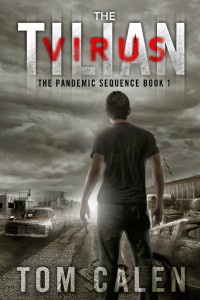 Tom Calen (author of The Tilian Virus)
Tom Calen (author of The Tilian Virus)
Lieutenant Ellen Louise Ripley. For me, the heroine of the Alien franchise (portrayed by Sigourney Weaver) was the first female action hero. Over the years, I have come across credible arguments asserting that other fictional women—such as Lila Crane of Psycho and Laurie Strode of Halloween—predate Ripley’s first appearance and therefore have better claim to the title of first female action hero. No disrespect to Lila and Laurie, but neither character influenced future female action heroes as strongly as Lt. Ripley did. From Sarah Connor to Katniss Everdeen, The Bride to Trinity, and Lara Croft to Selene, each was formed in the mold of Lt. Ellen Ripley.
When I started writing The Tilian Virus, I had no idea that I had a blossoming Ripley on my hands. Michelle Lafkin, the petit junior in my intended protagonist’s (Mike Allard) fifth period history class, was originally planned as—dare I say it?—a damsel in distress. There, I admit it. I even gave her blonde hair to reinforce the role. But, three books later, and with a fourth in progress, Michelle has proven to be no Rapunzel.
Michelle’s evolution from frightened girl to steel-spined hero is slow, possibly due to the fact that I didn’t realize it was occurring. In the flashback chapters of The Tilian Virus, she is beginning to adapt to the changes in her world. At the start of the pandemic, Michelle is still reliant on men to ensure her safety. However, in the flash-forward chapters, we see a young woman with some grit. In a conversation about the future, she says to Allard, “Everyone else seems to think it will be just picking up where we left off.” But he senses that grit, replying, “We know better, don’t we?” And Michelle does know better. In the series’ eight-year span, she has seen loved ones die, she has been touched by loss, and those challenges have informed her worldview. Yet, she has not soured on hope. Whether male or female, isn’t that the definition of “hero”? Isn’t that why Ripley went back for Newt, the hope that the child was still alive?
Through the second and third book of the series (The Tilian Effect and The Tilian Cure, respectively) Michelle comes to the fore of the story. Though never intended to be a character of strength, much less one critical to the story’s resolution, Michelle’s struggling-family background and her intelligence made her ideally suited to assume the mantel of the series’ true protagonist. Like Lt. Ellen Ripley before her, Michelle Lafkin became a hero because she needed to become the hero.
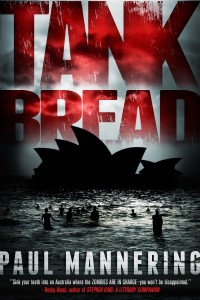 Paul Mannering (author of Tankbread)
Paul Mannering (author of Tankbread)
Women will tell you that being a girl isn’t easy. They are bombarded from infancy with a range of conflicting messages and standards and guidelines on how to dress, behave, think and conform. In apocalyptic scenarios, the veneer of civilization begins to crumble, or indeed may vanish in an instant with the flash of a nuclear blast, or the sneeze of patient zero in a global pandemic. This puts women in a more difficult situation than ever, as in apocalyptic fiction they are easy targets for scenes of rape, abuse, and male fantasies of dominance and control. Or, as authors of post-apocalyptic scenarios, we can treat women as human beings—with the same strengths, weaknesses, attributes, and flaws as our male characters.
This means more than turning women into men with breasts (the so called Strong Female Character). This is about giving your female characters their own voice. Let them tell their story and be an active part of the shaping of your apocalypse narrative.
Tankbread tells the story of Else. She’s a clone—with the body of an adult and the mind of a newborn. Else’s journey is the same journey of development we have all gone through. She learns quickly and develops into a character who experiences much of what we go through over a lifetime within a few short weeks. She is strong, physically—and why not? She learns things by doing them. She also learns by reading, talking, and observing. By the end of the story, she learns the harshest lesson of all.
In the first Tankbread, Else is The Maiden. In Tankbread 2: Immortal, Else has a different focus. She is an unwilling savior of the world. She has no desire to be a hero. She just wants to protect what is hers. Her protective instincts, actions, and nurturing personality place her in the role of The Mother. In Tankbread 3: Deadland, Else’s role takes on the third part of the mythological triptych: Maiden, Mother, and now Crone.
Again Else makes hard decisions. She puts others at risk for her own agenda and has no regrets about making others sacrifice for what she believes is right. She gives others autonomy, but she guides their decisions with her wisdom and understanding of what must be done for the greater good.
 The third book in the Tankbread series focuses on the life of Gin, a 16-year-old girl who has grown up in a world unlike our own. She deals with the walking dead on a daily basis and has all the hopes, dreams, and insecurities of any young woman. By taking her on her own journey of self-discovery and terror, I hope to provide a story that readers can enjoy.
The third book in the Tankbread series focuses on the life of Gin, a 16-year-old girl who has grown up in a world unlike our own. She deals with the walking dead on a daily basis and has all the hopes, dreams, and insecurities of any young woman. By taking her on her own journey of self-discovery and terror, I hope to provide a story that readers can enjoy.
Gin is ultimately relatable for all of us (at least those who remember being a teenager). She deals with jealousy, self-doubt, self-esteem issues, body issues, and ultimately her decisions affect others. She is drawn into a scenario where her actions go beyond self and into the survival of others and the possibility of a future for all.
Both Else and Gin could have been written as male characters, but they would have bored me. I wrote both as living people, building them up in layers as their stories progressed until I could hear, see, and understand them. This is the point where they told me their stories of growing up and finding their way in the world—and I was simply the narrator. These are characters that make mistakes, have flaws, and setbacks, but they also never give up. With some genetic advantages and a lot of luck, they survive in a world where many have not.
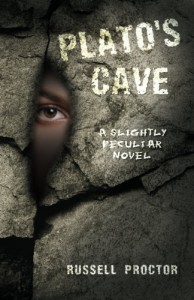 Russell Proctor (author of The Jabberwocky Book)
Russell Proctor (author of The Jabberwocky Book)
In my forthcoming Permuted Press horror/fantasy series The Jabberwocky Book, I take two iconic girl characters from children’s fiction and re-write them for adults. Alice from Alice’s Adventures in Wonderland becomes a middle-aged, married society woman, for whom the magical Wonderland is just a memory. Dorothy Gale from The Wonderful Wizard of Oz, on the other hand, is thirteen and fresh from her adventures in the Land of Oz.
I put them in Edwardian London to face a supernatural serial killer from Alice’s past, which is told in the first book of the series, The Red King. It was fun—and a little daunting—developing the characters beyond their original conceptions, while trying to stay true to their creators’ ideas.
Dorothy is by no means a stranger to adventure when the series starts. She has been to the Land of Oz twice and will experience further adventures there as the series goes on. However, at the start of The Red King she is a little in awe of Alice as the older, supposedly wiser, woman and finds the sudden plunge into murderous danger a little scary to say the least. However, by the end of the first book she has become far more resilient and able to deal with things by herself. In Oz, she had friends to protect her; in the real world, she learns that protection largely falls on oneself.
 Writing about young women is an odd occupation for a middle-aged man. Thinking like a thirteen-year-old female is harder than might be imagined when you don’t happen to be one!
Writing about young women is an odd occupation for a middle-aged man. Thinking like a thirteen-year-old female is harder than might be imagined when you don’t happen to be one!
I’m very drawn to strong female leads. In my book Plato’s Cave, I have a 20-something woman trying to find out the meaning of existence before existence itself is destroyed. In my novel Days of Iron, the 34-year-old female protagonist becomes a terrorist (though a complex set of circumstances).
I don’t like my female characters to be butt-kicking male fantasy figures. I try to present them as realistic women facing real dangers and reacting appropriately. To me, that is what makes female characters credible.
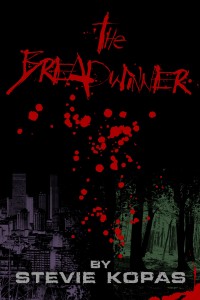 Stevie Kopas (author of The Breadwinner Trilogy)
Stevie Kopas (author of The Breadwinner Trilogy)
One of my main characters in The Breadwinner Trilogy (soon to be a Permuted Press title) is Veronica Williams, a 16-year-old straight-A student and high school track star. We first meet Veronica post-outbreak. She is a tough and no-nonsense survivor. But during a flashback/rewind later in the book, I take the reader back to the beginning and tell Veronica’s earlier story, when the Internet was still working. We see a different Veronica, one who chats online with friends and fights with her big brother. A teenage girl who adores her father and loves to run. She likes school and hates soft drinks.
The reason I chose to focus on a teenage girl is because I wanted someone who was the complete opposite of the other main character. Samson Eckhart is a criminal defense attorney, a man who has a way with words and understands manipulation. I needed someone to both complement and be the opposite of this man. I also wanted to create a father/daughter apocalypse dynamic between the two characters.
 I’m now writing the third and final book in the trilogy, and we see chapter by chapter that Veronica is coming into her own. At first she was alone in the apocalypse, but now she has found ways to rebuild the tiny family that she’s lost. As the story progresses and she loses more and more of those around her, we see that she is not losing bits of herself, she’s simply replacing what is lost with the stuff that will make her stronger.
I’m now writing the third and final book in the trilogy, and we see chapter by chapter that Veronica is coming into her own. At first she was alone in the apocalypse, but now she has found ways to rebuild the tiny family that she’s lost. As the story progresses and she loses more and more of those around her, we see that she is not losing bits of herself, she’s simply replacing what is lost with the stuff that will make her stronger.
I feel like that’s what important to see: how a young woman defines herself without a media-crazed society to infiltrate her consciousness. Yes, Veronica lives in a world ravaged by the dead, but she becomes who she needs to be, not what others want her to be.
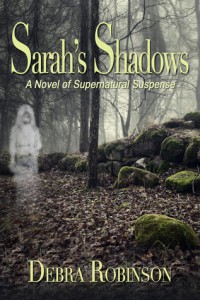 Debra Robinson (author of Shadows and Light series)
Debra Robinson (author of Shadows and Light series)
My upcoming first release with Permuted Press is titled Sarah’s Shadows. Sarah Brandon is an 18-year-old girl who starts out terrified of everything. That wasn’t always the case though. She was a normal—if a bit feisty—teenager, before her brother Jesse was killed. And when her despondent father commits suicide shortly thereafter, the new timid Sarah is born. Her formerly feisty personality is just another casualty of death. She is afraid to go out, to drive over bridges, but mostly, afraid everyone around her will die.
I dug into my own life to mine the feelings Sarah goes through. I wanted to touch that icky place we all have buried somewhere deep inside; the fear of our own mortality, of losing those closest to us, and the awareness of our own impermanence. For most of us, this doesn’t happen at such a young age. But when it does, like it does for Sarah, there are only two choices: hide or fight. Sarah fights.
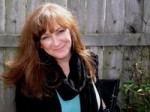 The premise involves Sarah waking up near the ceiling of the ER after an epic headache. She figures out she must be dead because no one can see or hear her, at least until her dead brother Jesse shows up. He explains the strange in-between world they now have to traverse to save their father, who is stuck there.
The premise involves Sarah waking up near the ceiling of the ER after an epic headache. She figures out she must be dead because no one can see or hear her, at least until her dead brother Jesse shows up. He explains the strange in-between world they now have to traverse to save their father, who is stuck there.
Best described as a twisted Wizard of Oz style quest meets a sinister afterlife, Sarah’s Shadows is a creepy peek into another realm. Nothing is what it seems, and Darkness disguises itself as Light. Sarah evolves from fearful to ferocious, and the twist ending leaves readers wanting more. The sequel, Sarah’s Sight, will soon follow to provide it. Find out more about this upcoming series at the Debra Robinson website.
 How About You?
How About You?
Who are your favorite post-apocalyptic or horror heroines? What characteristics are essential in young women who are suddenly facing the end of the world? What draws you to these types of characters?
And what about a young female protagonist who is a monster herself–and yet strangely childlike and vulnerable? Check out The Girl with All the Gifts by M.R. Carey. It’s a compelling take on the concept.





